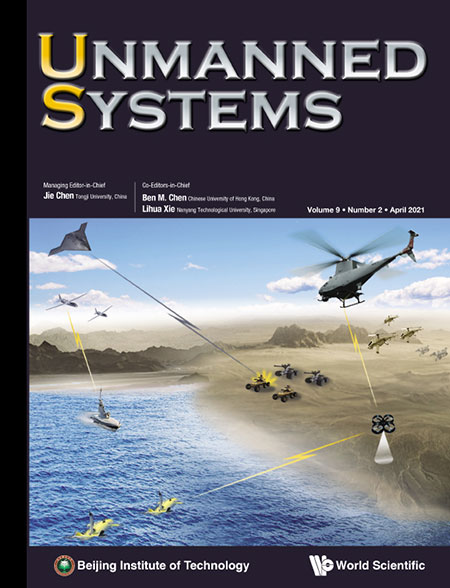探索网络化机载计算:先进模拟器和硬件试验台的综合方法
IF 2.4
3区 计算机科学
Q2 AUTOMATION & CONTROL SYSTEMS
引用次数: 0
摘要
近年来,网络机载计算(NAC)已经成为一种很有前途的模式,因为它可以利用无人驾驶飞行器(uav)的协作能力来完成分布式计算任务。尽管人们对NAC和无人机计算的兴趣日益浓厚,但许多现有的研究都依赖于过于简化的仿真来进行性能评估。这种依赖导致我们对NAC的真正潜力和挑战的理解存在差距。为了填补这一空白,本文提出了一个综合的方法:创建一个逼真的模拟器和一个新的硬件测试平台。使用ROS和Gazebo开发的模拟器,模拟网络化无人机,专注于资源共享和分布式计算能力。该工具提供了一个经济高效、可扩展和可适应的环境,使其成为在无数实际场景中进行初步调查的理想选择。同时,我们的硬件测试平台包括多个四旋翼机,每个四旋翼机都配备了一个Pixhawk控制单元、一个树莓派计算模块、一个实时运动学(RTK)定位系统和多个通信单元。通过广泛的模拟和硬件测试,我们深入研究了NAC性能的关键决定因素,如计算任务大小、无人机数量、通信质量和无人机机动性。我们的发现不仅强调了优化NAC性能的内在挑战,而且为未来的增强提供了关键的见解。这些见解包括改进模拟器,减少计算开销,并为硬件测试平台配备先进的通信设备。本文章由计算机程序翻译,如有差异,请以英文原文为准。
Exploring Networked Airborne Computing: A Comprehensive Approach with Advanced Simulator and Hardware Testbed
In recent years, networked airborne computing (NAC) has emerged as a promising paradigm because it can leverage the collaborative capabilities of unmanned aerial vehicles (UAVs) for distributed computing tasks. Despite the burgeoning interests in NAC and UAV-based computing, many existing studies depend on over-simplified simulations for performance evaluation. This reliance has led to a gap in our understanding of NAC’s true potential and challenges. To fill this gap, this paper presents a comprehensive approach: the creation of a realistic simulator and a novel hardware testbed. The simulator, developed using ROS and Gazebo, emulates networked UAVs, focusing on resource-sharing and distributed computing capabilities. This tool offers a cost-effective, scalable, and adaptable environment, making it ideal for preliminary investigations across a myriad of real-world scenarios. In parallel, our hardware testbed comprises multiple quadrotors, each equipped with a Pixhawk control unit, a Raspberry Pi computing module, a real-time kinematic (RTK) positioning system, and multiple communication units. Through extensive simulations and hardware tests, we delve into the key determinants of NAC performance, such as computation task size, number of UAVs, communication quality, and UAV mobility. Our findings not only underscore the inherent challenges in optimizing NAC performance but also provide pivotal insights for future enhancements. These insights encompass refining the simulator, reducing computation overheads, and equipping the hardware testbed with cutting-edge communication devices.
求助全文
通过发布文献求助,成功后即可免费获取论文全文。
去求助
来源期刊

Unmanned Systems
AUTOMATION & CONTROL SYSTEMS-
CiteScore
8.50
自引率
30.20%
发文量
36
期刊介绍:
An unmanned system is a machine or device that is equipped with necessary data processing units, sensors, automatic control, and communications systems and is capable of performing missions autonomously without human intervention. Unmanned systems include unmanned aircraft, ground robots, underwater explorers, satellites, and other unconventional structures. Unmanned Systems (US) aims to cover all subjects related to the development of automatic machine systems, which include advanced technologies in unmanned hardware platforms (aerial, ground, underwater and unconventional platforms), unmanned software systems, energy systems, modeling and control, communications systems, computer vision systems, sensing and information processing, navigation and path planning, computing, information fusion, multi-agent systems, mission management, machine intelligence, artificial intelligence, and innovative application case studies. US welcomes original manuscripts in the following categories: research papers, which disseminate scientific findings contributing to solving technical issues underlying the development of unmanned systems; review articles and state-of-the-art surveys, which describe the latest in basic theories, principles, and innovative applications; short articles, which discuss the latest significant achievements and the future trends; and book reviews. Special issues related to the topics of US are welcome. A short proposal should be sent to the Editors-in-Chief. It should include a tentative title; the information of the Guest Editor(s); purpose and scope; possible contributors; and a tentative timetable. If the proposal is accepted, the Guest Editor(s) will be responsible for the special issue and should follow the normal US review process. Copies of the reviewed papers and the reviewers'' comments should be given to the Editors-in-Chief for recording purposes.
 求助内容:
求助内容: 应助结果提醒方式:
应助结果提醒方式:


